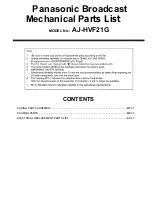
8
GAZELLE MANUAL
8
Bicycle Owner’s Manual
2. Safety
A. The Basics
WARNING: The area in which you ride may require
specific safety devices. It is your responsibility to
familiarize yourself with the laws of the area where you
ride and to comply with all applicable laws, including
properly equipping yourself and your bike as the law
requires.
Observe all local bicycle laws and regulations. Observe
regulations about bicycle lighting, licensing of bicycles,
riding on sidewalks, laws regulating bike
path and trail use, helmet laws, child
carrier laws, special bicycle traffic laws.
It’s your responsibility to know and obey
the laws.
1. Always wear a cycling helmet which
meets the latest certification standards and is appropriate
for the type of riding you do. Always follow the helmet
manufacturer’s instructions for fit, use and care of your
helmet. Most serious bicycle injuries involve head injuries
which might have been avoided if the rider had worn an
appropriate helmet.
WARNING: Failure to wear a helmet when riding
may result in serious injury or death.
2. Always do the Mechanical Safety Check (Section 1.C)
before you get on a bike.
3. Be thoroughly familiar with the controls of your
bicycle: brakes (Section 4.C.); pedals (Section 4.E.);
shifting (Section 4.D.)
4. Be careful to keep body parts and other objects away
from the sharp teeth of chainrings, the moving chain, the
turning pedals and cranks, and the spinning wheels of
your bicycle.
5. Always wear:
• Shoes that will stay on your feet and will grip the
pedals. Make sure that shoe laces cannot get into moving
parts, and never ride barefoot or in sandals.
• Bright, visible clothing that is not so loose that it
can be tangled in the bicycle or snagged by objects at the
side of the road or trail.
• Protective eyewear, to protect against airborne dirt,
dust and bugs — tinted when the sun is bright, clear when
it’s not.
6. Unless your bicycle was specifically designed for
jumping (See Appendix A, Intended Use) don’t jump with
your bike. Jumping a bike, particularly a BMX or mountain
bike, can be fun; but it can put huge and unpredictable
stress on the bicycle and its components. Riders who
insist on jumping their bikes risk serious damage, to their
bicycles as well as to themselves. Before you attempt to
jump, do stunt riding or race with your bike, read and
understand Section 2.F.
7. Ride at a speed appropriate for conditions. Higher
speed means higher risk.
B. Riding Safety
1. Obey all Rules of the Road and all local traffic laws.
2. You are sharing the road or the path with others —
motorists, pedestrians and other cyclists. Respect their
rights.
3. Ride defensively. Always assume that others do not
see you.
4. Look ahead, and be ready to avoid:
• Vehicles slowing or turning, entering the road or your
lane ahead of you, or coming up behind you.
• Parked car doors opening.
• Pedestrians stepping out.
• Children or pets playing near the road.
• Pot holes, sewer grating, railroad tracks, expansion
joints, road or sidewalk construction, debris and other
obstructions that could cause you to swerve into traffic,
catch your wheel or cause you to have an accident.
• The many other hazards and distractions which can
occur on a bicycle ride.
5. Ride in designated bike lanes, on designated bike
paths or as close to the edge of the road as possible,
in the direction of traffic flow or as directed by local
governing laws.
6. Stop at stop signs and traffic lights; slow down and
look both ways at street intersections. Remember that a
bicycle always loses in a collision with a motor vehicle, so
be prepared to yield even if you have the right of way.
7. Use approved hand signals for turning and stopping.
8. Never ride with headphones. They mask traffic
sounds and emergency vehicle sirens, distract you from
concentrating on what’s going on around you, and their
wires can tangle in the moving parts of the bicycle,
causing you to lose control.
9. Never carry a passenger; and, before installing a
child carrier or trailer, check with your dealer or the
bicycle manufacturer to make sure the bicycle is designed
for it. If the bicycle is suitable for a child carrier or trailer,
make sure that the carrier or trailer is correctly mounted
and the child is secured and wearing an approved helmet.
10. Never carry anything which obstructs your vision
or your complete control of the bicycle, or which could
become entangled in the moving parts of the bicycle.
11. Never hitch a ride by holding on to another vehicle.
12. Don’t do stunts, wheelies or jumps. If you intend
to do stunts, wheelies, jumps or go racing with your bike
despite our advice not to, read Section 2.F,
Downhill, Stunt
or Competition Biking
,
now. Think carefully about your
skills before deciding to take the large risks that go with
this kind of riding.
13. Don’t weave through traffic or make any moves that









































